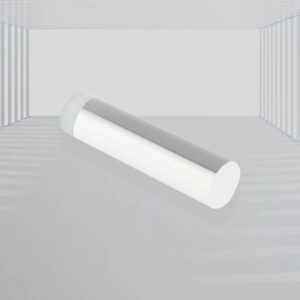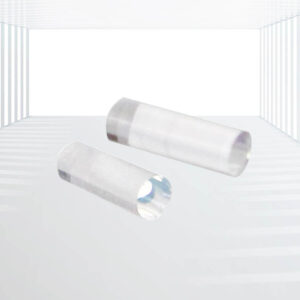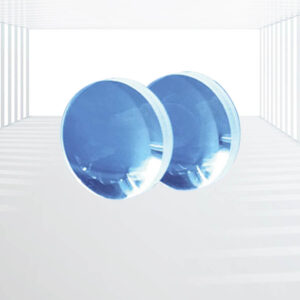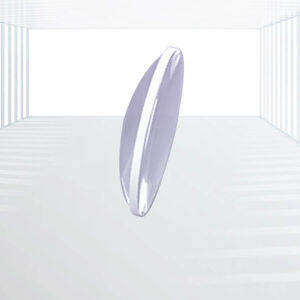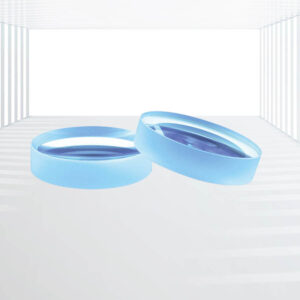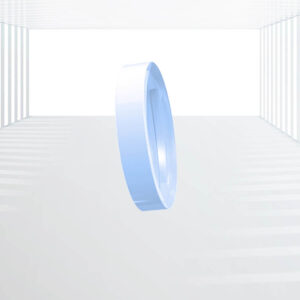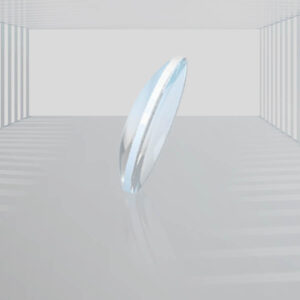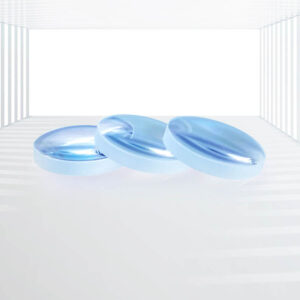λ4-λ N-BK7 Plano-concave Lenses
High Optical Quality:
The λ4 surface accuracy ensures precision optical performance, minimizing wavefront distortions and optical aberrations.
The 40-20 scratch-dig surface quality guarantees excellent surface smoothness, reducing scattering and unwanted diffraction effects.
Broad Wavelength Range:
These lenses are typically designed for operation across a wide wavelength range, although the exact range may vary depending on the coating and intended application. N-BK7 glass itself has a transmission range from 350 nm to 2.0 μm (uncoated), making it suitable for both visible and near-infrared applications.
Material Properties:
N-BK7 is a high-quality borosilicate crown glass known for its excellent homogeneity, low bubble and inclusion content, and ease of manufacturing.
It offers a good balance of transmission, durability, and cost-effectiveness, making it a popular choice for many optical components.
Focal Length and Diverging Ability:
Plano-concave lenses have a negative focal length, enabling them to diverge collimated beams. This property makes them useful in applications where beam expansion or divergence is required.
Versatility:
Available in various diameters, including 6 mm, 9 mm, 1/2″, 25 mm, 1″, and 2″, allowing for flexibility in system design.
Focal lengths can also vary widely, offering a range of options to suit different applications.
Antireflection Coatings:
While the exact coating specifications may not be directly stated as “λ4-λ” in the context of this question, N-BK7 plano-concave lenses can be coated with various antireflection (AR) coatings to minimize reflections and maximize transmission over specific wavelength ranges. This can improve overall optical efficiency.
Applications: Laser Scanners, Remote Sensing Instruments, Imaging Instruments, Fiber Lasers, Interferometers, etc.
A Plano-Concave Lens is a bulk optical singlet with a flat side and a concave side, resulting in a negative focal length and negative spherical aberration. These lenses diverge collimated light beams from a virtual focus and can be used to spread a collimated light beam, increase the focal length of an optical instrument, and balance out spherical aberration, thereby improving image quality. Plano-concave lenses are commonly incorporated into Galilean beam expanders and other optical systems to reduce spherical aberration, coma, and distortion, especially when the absolute conjugate ratio (objective distance: image distance) is greater than 5:1.
N-BK7 is a RoHS-compliant borosilicate material widely used in the visible and NIR spectrum. It features high optical homogeneity, excellent resistance to scratches and abrasions, low cost, and low inclusion content. N-BK7 is an ideal substitute for UV Fused Silica when high UV transmission is not required and a preferred alternative to CaF2 in the 1.65-2.3 µm wavelength region due to its lower manufacturing costs.
Specifications:
| Lens Form | Plano-concaveLens |
| Material | N-BK7 |
| Working Wavelength Range | 350-2200nm |
| Irregularity@632.8nm | λ/4-λ |
| Surface Quality (S/D) | 40/20 |
| Clear Aperture | 90% |
| Centering Error | ≤2 arc min |
| Diameters | 0.5-300mm |
| Protective Chamfer | 0.2mmx45° |
| Coating | Uncoated, V-coating, BBAR coating |
Features:
1.High Optical Quality:
- The λ4 surface accuracy ensures precision optical performance, minimizing wavefront distortions and optical aberrations.
- The 40-20 scratch-dig surface quality guarantees excellent surface smoothness, reducing scattering and unwanted diffraction effects.
2.Broad Wavelength Range:
- These lenses are typically designed for operation across a wide wavelength range, although the exact range may vary depending on the coating and intended application. N-BK7 glass itself has a transmission range from 350 nm to 2.0 μm (uncoated), making it suitable for both visible and near-infrared applications.
3.Material Properties:
- N-BK7 is a high-quality borosilicate crown glass known for its excellent homogeneity, low bubble and inclusion content, and ease of manufacturing.
- It offers a good balance of transmission, durability, and cost-effectiveness, making it a popular choice for many optical components.
4.Focal Length and Diverging Ability:
- Plano-concave lenses have a negative focal length, enabling them to diverge collimated beams. This property makes them useful in applications where beam expansion or divergence is required.
5.Versatility:
- Available in various diameters, including 6 mm, 9 mm, 1/2″, 25 mm, 1″, and 2″, allowing for flexibility in system design.
- Focal lengths can also vary widely, offering a range of options to suit different applications.
6.Antireflection Coatings:
- While the exact coating specifications may not be directly stated as “λ4-λ” in the context of this question, N-BK7 plano-concave lenses can be coated with various antireflection (AR) coatings to minimize reflections and maximize transmission over specific wavelength ranges. This can improve overall optical efficiency.
Applications:
- Laser Scanners: Improving beam quality and precision.
- Remote Sensing Instruments: Enhancing image resolution and reducing aberrations.
- Imaging Instruments: Increasing focal length and reducing spherical aberrations.
- Fiber Lasers: Optimizing light divergence and focusing.
- Interferometers: Ensuring precise optical measurements and stability.
Kingwin Optics offers both stocked and custom N-BK7 Plano-Concave Lenses with a diameter range of 0.5-300mm, allowing for flexible incorporation into various optical systems, including laser scanners, remote sensing and imaging instruments, fiber lasers, and interferometers. The focal lengths of the stocked N-BK7 Plano-Concave lenses range from -25mm to -100mm, with other focal lengths available upon request. These lenses feature λ/4 irregularities and a 40/20 scratch/dig surface quality. Each lens undergoes strict inspection in Kingwin Optics’ in-house labs before dispatch to ensure tight tolerances and secure customer interests.




